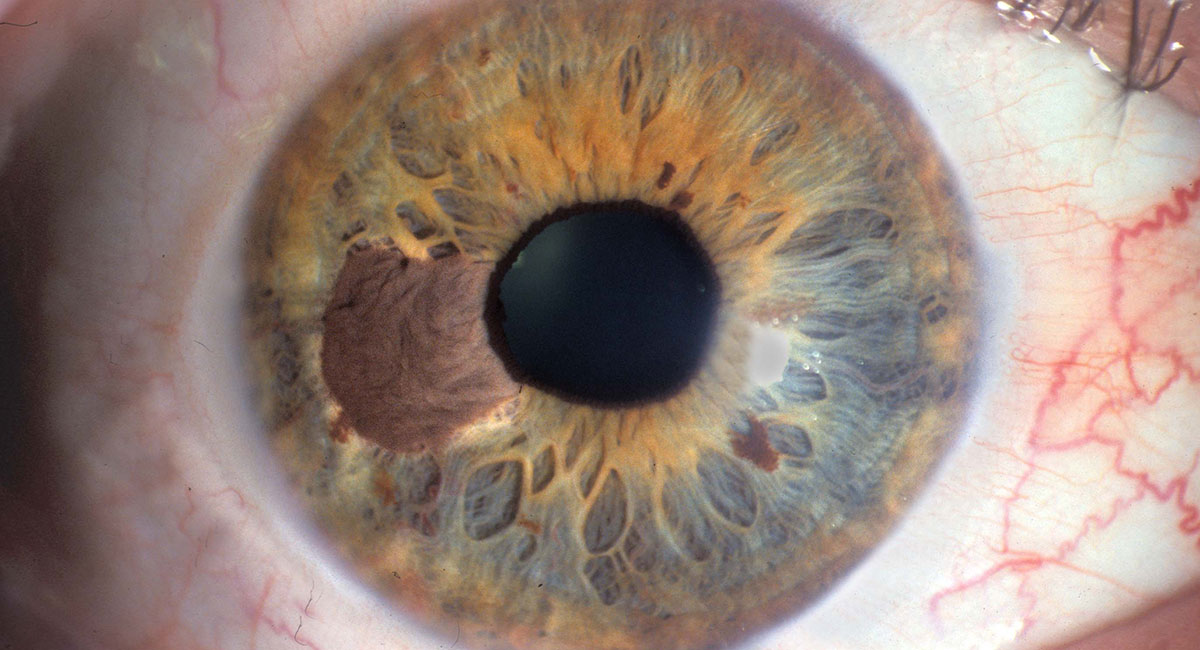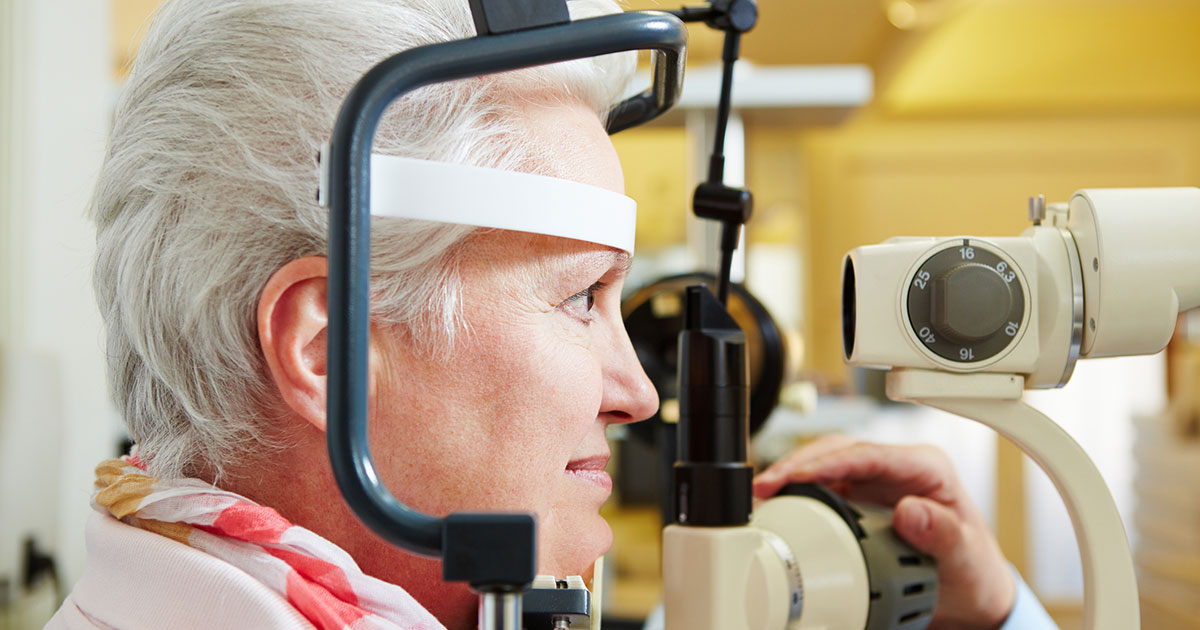A Complete Guide to Eye Cancers; Types, Symptoms, and Treatments
Eye cancer is an extremely rare condition when compared to other types of cancers. The condition occurs when healthy cells in the eyes start to grow unconditionally and form a tumor. These tumors can either be benign, meaning it won’t spread, or malignant (otherwise known as a cancerous tumor). A cancerous tumor has the ability to spread to other body parts and affect the eyelids, but mostly an eye tumor affects the eyeball that consists of the uvea, sclera, and the orbit.
Types Of Eye Cancer

There are mainly two types of eye cancer in adults; primary and secondary intraocular cancers. Primary intraocular are further classified into melanoma and lymphoma; they begin inside the eyeball. Ocular lymphoma stems from lymphocytes (a type of white blood cells) dividing and growing uncontrollably. It happens mostly in older patients and commonly associated with autoimmune disorders and a weakened immune system. Lymphoma is associated with pain in the eyes, redness, blurred vision, swelling, and sensitivity to light. There are two types of intraocular melanoma; uveal and conjunctival. Secondary intraocular cancers do not originate from inside the eye. For women, they most commonly begin in the breasts and the lungs in men before spreading to the eyes.
Intraocular Melanomas

Uveal melanoma is the most common type of eye cancer, and it affects any of the three parts of the uvea; the iris, ciliary body or choroid. The typical uveal tumor is an elevated mass that can either be dark brown in color or amelanotic. Conjunctival melanoma occurs when a tumor grows in the outside lining of the eyeball, and it mostly looks like a black spot. Intraocular melanoma can spread quickly to other parts of the body if not treated early enough. However, this kind of eye cancer is not hard to diagnose and treat because the symptoms and the spots are relatively visible early on.
Eye Cancer In Children

Retinoblastoma and medulloepithelioma are the most common eye cancer types in children. Retinoblastoma is found in the retina of children below five years of age and most commonly starts when the child is in the mother's womb. Retinoblastoma occurs when eye cells - called retinoblasts - continue to grow uncontrollably and form a cancerous tumor. Common signs of this condition include white eye, cat eye, irritated and red eyes, crossed eyes and enlargement of the eye. Medulloepithelioma is an extremely rare yet aggressive form of cancer that starts in the ciliary body of children between the ages of six months and five years. The tumor is characterized by eye pain, loss of vision and seizures because of its rapid growth. However, unlike retinoblastoma, this type of cancer rarely spreads to other parts of the body.
Other Types Of Eye Cancer

Apart from melanoma and lymphoma, other types of eye cancer affect the outer parts of the eyes. Lacrimal gland cancer falls into this category, which affects the tear glands found above or on the side of your eye. It mainly affects people over thirty years of age who have fair or lighter skin tones, and can be seen as a red patch or burn below the eyes. Eyelid cancer is also another type that affects the lower eyelid because of staying in the sun for too long. This kind of cancer is also referred to as basal cell carcinoma, and it is easy to treat if detected early.
Risk Factors Of Eye Cancer

Unlike other types of cancer, there are simple things that cause or trigger eye and skin cancers such as genes, sunlight, and ethnicity. Eye cancer is more common in fairer skinned individuals than any other race and those who have light colored eyes. Patients who were diagnosed with skin cancer in the past, or have skin moles are more likely to receive a positive eye cancer diagnosis when compared to others. Eye melanomas can also be passed genetically through a gene called BPA1. Other catalysts include increased exposure to sunlight, or occupational hazards associated with welding and working in chemical industries. Of course, not all types of eye cancer have a definitive cause, but they are commonly related to a malfunctioning gene or cells growing out of order to form tumors.
Symptoms

The symptoms of eye cancer are similar to migraines and other eye issues, so it can be challenging to detect eye cancer in its early stages. Such signs include a change in vision where an individual's sight is blurry, or they see flashes of light, floaters or zigzags. However, certain types of eye cancer cause visible changes in the eye such as black spots, sores, and wounds. Some patients will lose part of their vision without experiencing any other signs, while others will feel intense ocular pain. Since it is difficult to differentiate eye cancer symptoms and other kinds of eye problems, it is better to visit an ophthalmologist immediately after experiencing odd spots or malfunctions in the eyes.
Diagnosis

An ophthalmologist will diagnose eye cancer using various tests. Light, magnifying lenses, and dilating drops will dilate the pupil, exposing the internal areas more clearly, making it easier to determine if there is a problem. Apart from examining the way a patient's eyes are moving, an ophthalmologist will ask some follow up questions about the patient’s lifestyle, family history, and symptoms they have been experiencing. He or she will likely also run necessary tests such as an MRI and ultrasound to obtain a clearer picture of the eyes, and recommend a biopsy to test a small tissue sample of the growth.
Treatments For Eye Cancer

If an ophthalmologist discovers that the patient indeed does have ocular cancer, various treatment options have to be considered and discussed with a team of doctors. Treatment options depend on many factors, including the location of the tumor, stage of cancer and side effects of the chosen treatment on the patient. The patient will meet with other specialists such as radiation oncologist, medical oncologist and other medical experts who will help to guide them through the treatment stages. It is also advisable for a patient to see a counselor, attend support groups and openly discuss the future with their family as the treatment process may not be effective, and also to aid the patient in dealing with any eventuality and associated side effects.
Treatment; Observation

Though cancer should be treated as early as possible, it is not always critical to begin treatment on some forms of eye cancer. If a tumor is too small and not growing, or if the patient has no symptoms at all, the doctor may decide to hold off on treatment and observe the area for a period of time. Active surveillance is recommended for senior patients, those who are sick, patients who only have one useful eye or if treatment will cause more pain than relief. Treating eye cancer comes with side effects more often than not, so some doctors may prefer to delay the process until it is absolutely necessary.
Treatment; Radiation

Radiation therapy is an effective treatment method that involves using a high-energy beam to destroy cancer cells. The two types of radiation used to treat eye cancer are external beam radiation and brachytherapy. External beam radiation is recommended for eyelid tumors, lymphoma, and orbital tumors. However, it kills cells from the surrounding area as well. Brachytherapy, on the other hand, is more sparing because the radioactive plaque is custom made to the dimensions of the tumor, so no surrounding tissue or cell is harmed. The rice-sized plaque is surgically placed directly on the tumor to kill cells and reduce its size. Possible side effects include dry eyes, loss of eyelashes and cataracts.
Laser Therapy And Cryotherapy

Laser therapy uses extreme light and heat to reduce a tumor and kill the cancerous cells. It is a safer method with fewer side effects, so this method is mainly used to treat retinoblastoma in kids. Laser therapy can also be used interchangeably with radiation to kill cancer cells and help with treatment-related complications. Cryotherapy uses low temperature to freeze the malignant tissue so it can be inflamed. It is a wonderful treatment for eyelid tumors and conjunctival melanoma, and it is done under anesthesia. Too much heat or cold can be used to treat eye cancer by destroying the cells and tissues. Both of these methods are relatively painless and have fewer side effects.
Treatment; Surgery

A surgical resection of the tumor and its surrounding cells is one of the most effective ways to kill cancer. This operation may involve removing part of the iris, removing part of the iris and the ciliary body or eliminating the tumor without including any part of the eye. Surgery is a feasible option only if the tumor is not so large that it will cause damage to the eye, or too small where radiation or chemotherapy will suffice. Unfortunately, there are many possible side effects of ocular surgery. They include infection, pain, blindness, and a negative reaction to anesthesia. There is little way of knowing if the removal was a success for a few days or even months after the surgery is performed.
